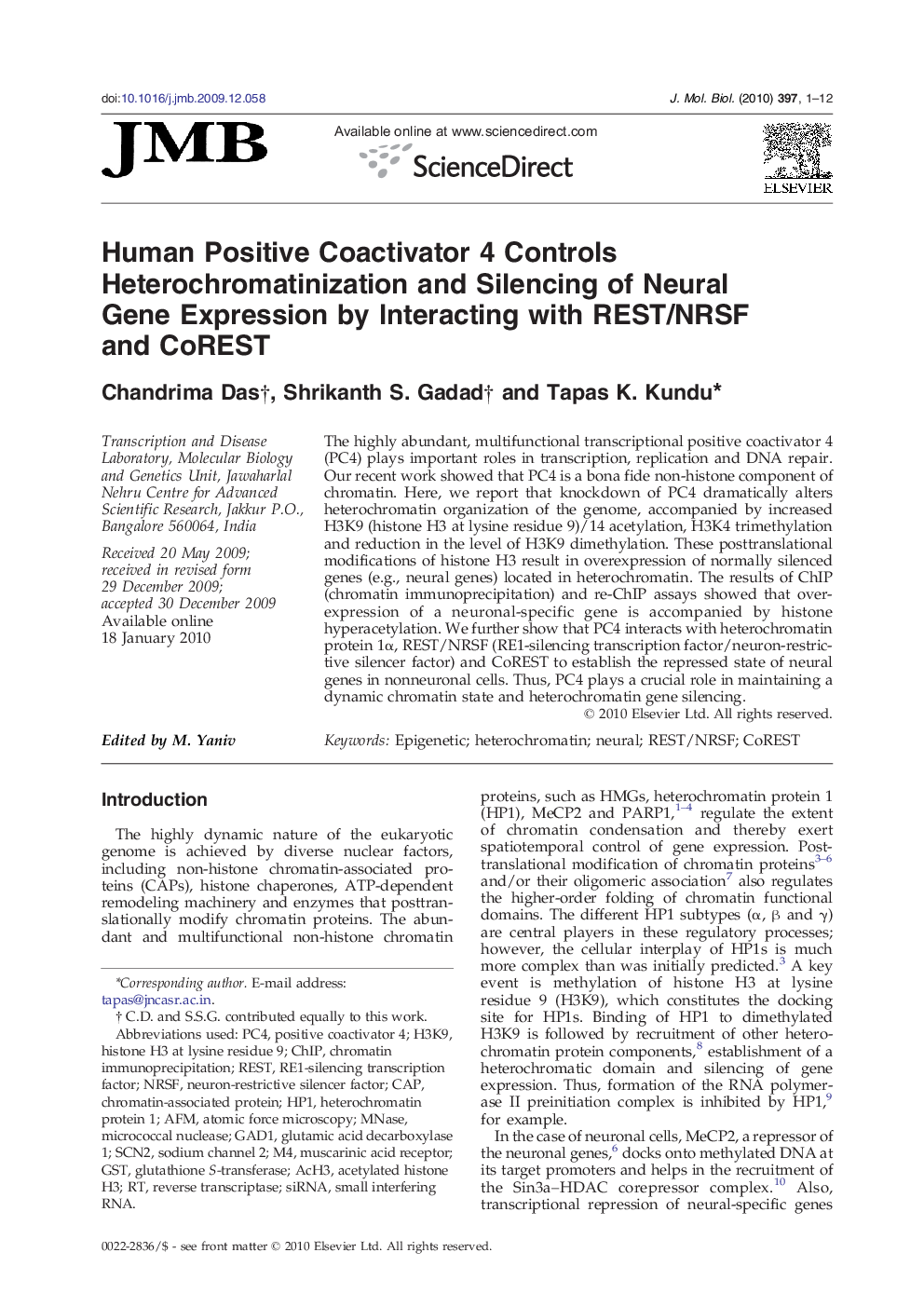| Article ID | Journal | Published Year | Pages | File Type |
|---|---|---|---|---|
| 2185963 | Journal of Molecular Biology | 2010 | 12 Pages |
The highly abundant, multifunctional transcriptional positive coactivator 4 (PC4) plays important roles in transcription, replication and DNA repair. Our recent work showed that PC4 is a bona fide non-histone component of chromatin. Here, we report that knockdown of PC4 dramatically alters heterochromatin organization of the genome, accompanied by increased H3K9 (histone H3 at lysine residue 9)/14 acetylation, H3K4 trimethylation and reduction in the level of H3K9 dimethylation. These posttranslational modifications of histone H3 result in overexpression of normally silenced genes (e.g., neural genes) located in heterochromatin. The results of ChIP (chromatin immunoprecipitation) and re-ChIP assays showed that overexpression of a neuronal-specific gene is accompanied by histone hyperacetylation. We further show that PC4 interacts with heterochromatin protein 1α, REST/NRSF (RE1-silencing transcription factor/neuron-restrictive silencer factor) and CoREST to establish the repressed state of neural genes in nonneuronal cells. Thus, PC4 plays a crucial role in maintaining a dynamic chromatin state and heterochromatin gene silencing.
